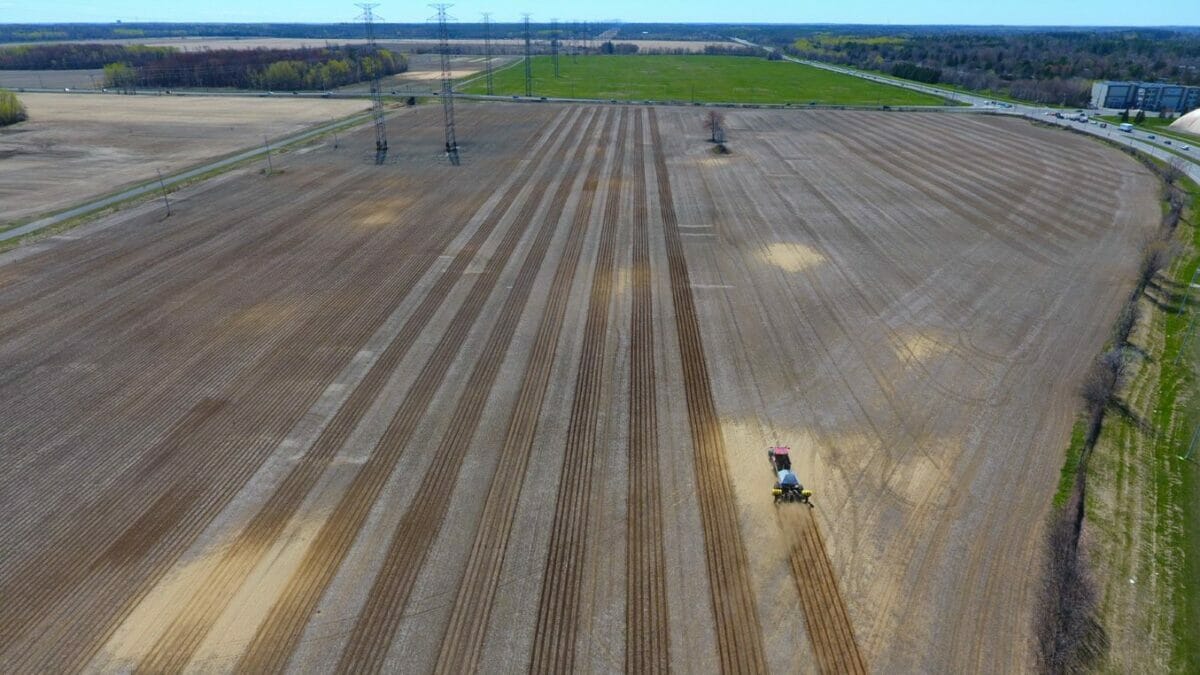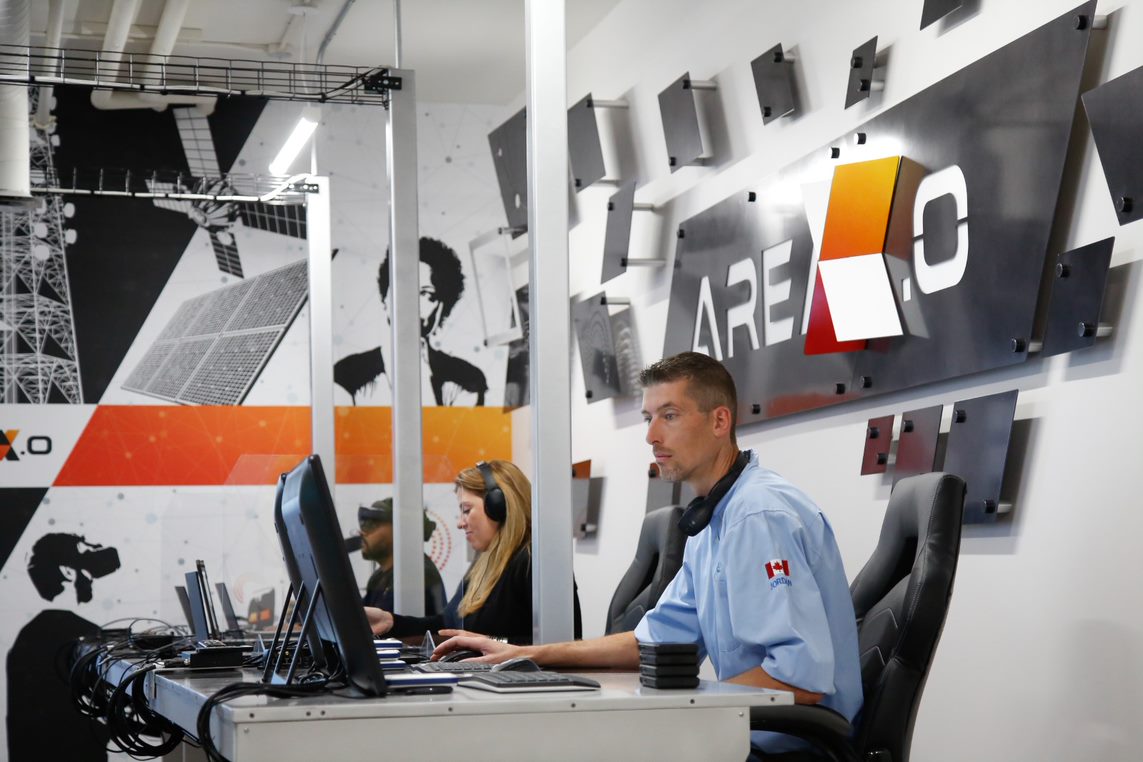In Ottawa, a government-supported nonprofit is researching solutions to address current—and future—problems for farmers.

On the outskirts of southern Ottawa, about 25 minutes from the Canadian Parliament buildings, sits a farm. It’s one of many in the fertile Ottawa Valley, the majority of which grow corn or other cereal crops. The valley is also home to orchards and vineyards, as well as smaller parcels of acreage planted with fresh produce.
But this farm is different. For one, it’s led and developed by Invest Ottawa, a nonprofit that receives a generous amount of funding from local governments. Unlike traditional farms, this one is not especially concerned about which crops it’s growing year to year. Instead, its most important output is data, and a good yield is determined by how much information they are able to collect and share with the farmers surrounding them—and across the world.
The Smart Farm at Area X.O oversees more than 100 acres of farmland that’s dedicated to testing out anything and everything that might change the way people farm. Drones, agriculture tech, autonomous farm vehicles and robotics all come into play at the farm, which also partners with private companies and universities to analyze data collected from their agricultural experiments. The goal is simple: To find solutions to not just address current problems, but future issues that may pop up as a result of climate change.
“The perfect project for us is one that includes industries big and small,” says Michael Tremblay, Invest Ottawa president and CEO. “So applied research from academia, the aggressive commercialization of industry. And of course, the regulators can help to adjust policy to make sure that some of these new technologies will find themselves available in the markets.”
It’s a lofty goal, although it doesn’t scare Jordan Wallace, the one who’s actually in the dirt conducting the experiments. A born-and-bred farmer, Wallace grew up on a dairy farm in the Ottawa area. While he doesn’t have an engineering background, he says he takes on this work with a farmer’s mindset “and common sense.”

This year, Wallace dug into some hefty experiments, including what he calls “fertile stripping,” or placing fertilizer in smaller, concentrated areas while working it into the soil. “We’re able to deliver a nutrient-rich zone that is fully encapsulated in soil. Because it’s all mixed, we don’t have the same nutrient leaching and the same volatilization of those nutrients up into the atmosphere. We have a better opportunity for that nitrogen,” Wallace says.
From there, the team connects with doctoral students at schools like the University of Ottawa to analyze their data. “They’re developing a predictive algorithm that’s going to make it possible to input just a couple of simple parameters, such as temperature and rainfall, to predict what the carbon output might be, or the nitrous oxide output might be from a particular field,” says Susanne Cork, director of business development at Area X.O. “What we’re really trying to do is take these scientific discoveries that we’re making and make them accessible more broadly.”
That prized data is how Wallace says the farm will actually make a difference—by removing some of the emotion from the business of farming. This will help “a farmer look at his farm as a commercial business, not just [viewing] farming the way that my grandfather did because that’s the way we always did it,” Wallace says.
For example, what makes a productive yield? “It could be 100 bushels of corn, it could be 300 bushels of corn. If I’m not making any money at it, why am I doing this?” That’s what Wallace—and the smart farm—aims to do. To take the labor costs, time inputs and environmental impacts into consideration together in order to figure out what the end result might be.
Now, the smart farm is hoping to expand and work with even more farmers. While their focus is still regional, they are looking to see what can transfer to international farms. This year, the farm has hosted delegations from Germany, Japan and India.
More importantly, the focus of the farm is squarely on environmental challenges and issues that will continue to arise due to climate change, especially the climate’s impact on food supply and food insecurity. For that, collaboration is crucial.
“What could a computer scientist or an engineer bring to the table from an agriculture perspective?” Cork asks. “We’ve got the Farmers Almanac, we’ve got many of these tried and true capabilities that have held everyone in good stead. But I would argue that the world has changed somewhat with respect to some of the forces that are putting pressure on us now. And I think, you know, we need to look a little further afield for where the answers are going to come from.”